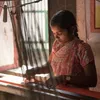How the DesignUp 2021 conference aims to raise Rs 1 Cr for COVID-19 relief work in rural India
This international conference features a star cast of design experts – and also virtual fundraising for pandemic relief.
Launched in 2016, DesignUp is now regarded as the most influential design-in-tech event in India and Southeast Asia. This year, the DesignUp 2021 conference team’s response to India’s apocalyptic second wave of the COVID-19 pandemic is to organise a virtual fundraising drive along with the stellar lineup of speakers.
To be held on the weekends of June 11-20, 100 percent of donations will go to charities bringing much-needed relief to rural India, in the form of dry rations, oxygen concentrators, and health centre wards.
As media partner for the conference series, see YourStory’s coverage of DesignUp’s earlier online panels in 2020, May the Fourth be with you, and The pandemic’s impact on design as a business. See also our write-ups on the annual DesignUp conference editions from 2019, 2018, and 2017, and our d-Zen (‘Design Zen’) section for more design resources.
The organisers explain that the focus of fundraising is rural India, where 75-80 percent of India's 1.4 billion people live. They do not have access to oxygen, beds, medicines, ambulances, and food.
Their plight may not be tweeted much, but rural Indians are plagued with problems like broken healthcare, piling debt, loss of one or more parents for children, and lack of employment for migrant workers.
DesignUp 2021 hopes to raise Rs 1 crore or more in funds for charities directly involved in saving lives and sustaining families and communities in rural India. Conference passes are treated as donations, priced at minimum of Rs 6,750 ($90), the organisers explain.
One pass can buy dry rations for three daily-wage earner families of four, for 30 days. Nine passes can cover the cost of an oxygen concentrator for a community health centre, while 100 passes can pay for an isolation ward of 15 beds for a rural health centre.
The lineup of 32 stellar speakers (and growing) caters to at least six of eight key international time zones. See our interviews with speakers Payal Arora, Andy Budd, and Simon Roberts.

In this interview, we feature conference highlights and design insights from the organising team, headed by Jay Dutta and Shiva Vishwanathan.
Jay Dutta is SVP of Design at MakeMyTrip, and Founder/Curator of DesignUp. He was earlier Venture Advisor for Product Design at SAIF Partners. He is a graduate of The University of Salford and the National Institute of Design (NID).
Shiva Viswanathan has 28 years of market experience in print and interactive design. He is CMO and Design Head at Catenate, and Senior Design Consultant for Ogilvy Pennywise. He is a graduate of NID.
Edited excerpts of the interview below:
YourStory [YS]: What’s the back-story behind launching the conference this year along with a fundraiser?
Jay Dutta [JD]: In 2020, DesignUp took a break – we focused on our families and teams (we have a variety of day jobs). We have also been a little averse to remote events, due to webinar fatigue – this is my fifth year using zoom at work). So DesignUp2021 actually wasn’t on our agenda at all.
But the second wave of the pandemic this year hit us terribly hard. There are so many people we know who succumbed to COVID-19, there have been so many untimely deaths. May 3rd was a particularly brutal Monday after a weekend of several losses.
People of relative privilege and money have it so very hard – what would it be like for people with little or none of that? That's how DesignUpForACause was born.
Late that night I reached out to our core group - Shiva, Baisam, Rasagy, Dharmesh, and Narayan – and everyone was in! Some of the iconic speakers agreed in a heartbeat.
About eight days later, after grappling and negotiating with the complicated payment processes (paying to charities isn’t as straightforward as it seems!), the site went live.

[YS]: How many speakers are you aiming at? What’s the selection criteria?
[JD]: DesignUpForACause has an unrealistic timeline. We normally take eight months to roll-out a conference, but this one was put together in just six weeks. We were led by the fund-raising cause - and didn't have a speaker number in mind, or theme. Posting a call-for-speakers was out of the question.
So, it came down to a handful of iconic designers, makers, and creators whose work and thinking many of us have admired and followed – and some popular DesignUp-alum.
We have also gone beyond UX and product, and now have a super broad focus with Branding, Ecology, Behavioral Design, Research, Motion Graphics, Illustration, and more. For a community emerging from the COVID nightmare, this would be a creative reboot – while also doing some meaningful good!
[YS]: Which NGOs have been chosen to raise funds for, and why?
Shiva Viswanathan [SV]: We have three guiding principles:
1. Give to underserved people and long-term fixes. For example, oxygen and beds in the system were immediate needs. We are focusing on rural belts since the distress there is real (though not amplified on social media) – and infrastructure is very rudimentary.
2. Give for rehabilitation, not just relief (e.g., migrant workers out of work).
3. Give to charities for whom our donation can make a meaningful investment (e.g., building an isolation ward or refitting a vehicle to make it an ambulance).
Our primary partner is UnitedWay, the oldest and largest privately funded charity in the world. The 132- year-old organisation engages with over 2.5 million corporate and community volunteers every year. We are partnering with their Bengaluru chapter.
They will disburse the collected money to Goonj, Tribal Health Initiative, and Aajeevika Bureau. The founding team has also supported Hemkunt Foundation directly.

[YS]: How is the transparency of donations being ensured?
[SV]: When you donate, the money directly goes into the UnitedWay escrow. This is disbursed to the not-for-profits that we have shortlisted, and not to DesignUp at all. UnitedWay has done its due diligence on all the NGOs before listing them.
[YS]: In addition to online talks, what are some other virtual interaction activities planned?
[SV]: Depending on the platform, we will have mixers as virtual networking events. Of course, there are panel discussions and faux-fireside chats (since there’s no fire or people are all over the world), with lots of audience interaction on all days.
[YS]: What are some post-conference activities planned?
[JD]: The DesignUp Deconstruct Report is planned for launch after this – once we catch our breath!
[YS]: When will the Design Deconstruct Report be released? What does it address?
[SV]: Design Deconstruct 2021 focuses on design as a practice during the pandemic over 2020-21. It qualitatively and quantitatively captures how and where we designers worked, impact on businesses and jobs, and how we felt during the pandemic.
Given the severity of the second wave, we have delayed the launch a bit and hope to have it out by August 2021.
[YS]: What do you see as the crucial role of designers in these uncertain times?
[JD]: We designers have a unique set of skills and abilities – but in times like these, our skills may not be directly translatable. However, we can empower others – NGOs, healthcare professionals, and frontline workers.
Raising funds for them to function uninterrupted would be one way. Lots of people are auctioning art, illustrations, and even NFTs – ours is another way.
We talk a lot about empathy, and a simple way to help would be to listen, or volunteer time (e.g., to make phone calls, find or connect people to services). A lot of people are already doing that.
Designers have a “solution” mind set – we want to solve problems. That is fantastic, but we need to also serve in times like these. Simply serve, not just solve.

[YS]: What are your tips or parting words of advice to our audience?
[SV]: We – designers, techies, and product makers – should realise that we are a privileged lot, with enough food, shelter, WiFi, and the ability to vent or ask for help. That is a huge step forward.
We should understand and leverage our privileges, skills, and abilities to help those that are underserved or unserved and vastly under-privileged. We see the aftermath in a few phases – rescue, recovery, and rehabilitation. While there is little that we can do in the rescue phase, we can do a lot in recovery and rehabilitation.
It is important to be participative and not be passive on the sidelines. Extend your skills to not-for-profits and communities that need help. Today.
[YS]: Any other concluding comments or remarks?
[JD]: I am reminded of an announcement made in flights, before takeoff: Before assisting others, put on your own oxygen mask.
Self-care is important – this pandemic has also helped show us the importance of mental health. Use this time to assess, spend some time, and understand yourself better – while you go out to help others and make a little dent in the universe.
Edited by Megha Reddy









